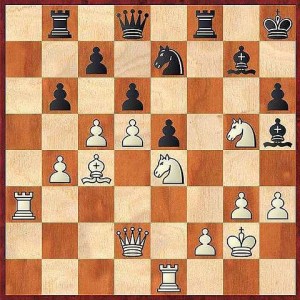Vladimir Kramnik and Magnus Carlsen finish in top form.
IT did not come as a surprise to many that Russia’s Vladimir Kramnik and Norway’s Magnus Carlsen were convincing winners in the Dortmund Sparkassen invitational chess tournament and annual Biel Chess Festival respectively.
In Dortmund, Germany, Kramnik had been dominant in the first half of the double round-robin tournament and though he could not repeat his feat in the second half, the advantage that he brought forward was enough to see him through.
In the final round, he was even tempted to try his luck against American grandmaster Hikaru Nakamura. Somewhere in the middlegame, he uncorked a brave sacrifice to open up his opponent’s defences around the king.
A win would almost certainly have propelled Kramnik into the elite 2800 club of the live ratings list of which there are currently only three players: Carlsen, Viswanathan Anand and Levon Aronian. But in this case, fortune did not favour the brave. There was always something in the position that enabled Nakamura’s defence to hold. Possibly, the draw could still be salvaged but at this late stage in the game, Kramnik was probably no longer interested to split the point.
Despite the loss, the Russian grandmaster still won the tournament with a big two-point margin over his rivals, the nearest of whom was Vietnamese grandmaster Le Quang Liem. Ruslan Ponomariov, a former Fide world champion, was third.
Meanwhile in Switzerland, the Biel tournament was won by Carlsen. This was also a double round-robin event which saw the players playing one another twice. However, the organisers had adopted a different scoring system that awarded three points for a win, one point for a draw and zero point for a loss, something that we would probably be more familiar with in football competitions.
There are, of course, merits in trying something different and in this case, the organisers were hoping to impress on the players – and the spectators – that drawing two games have less value than a win and a loss. It would call for fighting chess all the way, which was what the organisers achieved at the end.
Carlsen continued to put in an exemplary display in this event, despite showing a vulnerability in the first half when he lost to French grandmaster Maxime Vachier-Lagrave. However, this only setback did not cause Carlsen any real damage because his closest rival, Alexander Morozevich, was unlucky enough to lose to Fabiano Caruana. The final standings could have been different had Morozevich won that game.
Here is Nakamura’s win against Kramnik from the final round of the Dortmund tournament.
Vladimir Kramnik – Hikaru Nakamura, Dortmund 2011
1. d4 Nf6 2. c4 g6 3. Nc3 Bg7 4. e4 d6 5. Nf3 O-O 6. Be2 e5 7. O-O Nc6 8. d5 Ne7 9. b4 Nh5 10. c5 Nf4 11. a4 f5 12. Bc4 fxe4 13. Nxe4 h6 14. Re1 Bg4 15. Ra3 g5 16. h3 Bh5 17. Bxf4 Rxf4 18. g3 Rf8 19. a5 Kh8 20. Kg2 Rb8 21. Qd2 b6 22. axb6 axb6 23. Nfxg5 (See diagram)
23…hxg5 24. Qxg5 Bg6 25. cxd6 cxd6 26. Ra7 Rc8 27. Rxe7 Rxc4 28. f3 Rc2+ 29. Kg1 Rc8 30. Ra1 Rf7 31. Qxg6 Qxe7 32. Ng5 Kg8 33. Qh7+ Kf8 34. Ne6+ Ke8 35. Qh5 Bf6 36. g4 Qb7 37. Rd1 Qa6 38. Qg6 Ke7 39. g5 Bh8 40. Re1 Qa3 41. Nd4 Qxb4 42. Nf5+ Kf8 43. Rd1 Rc2 44. Nd4 exd4 45. Qxc2 Qc3 46. Qe4 Qe3+ 47. Qxe3 dxe3 48. Kg2 Bc3 49. Kf1 Rxf3+ 50. Ke2 Rxh3 0-1


